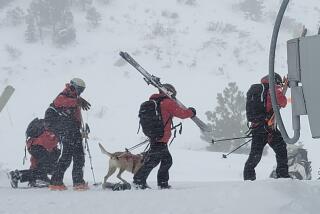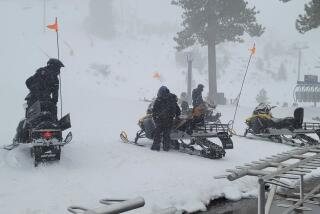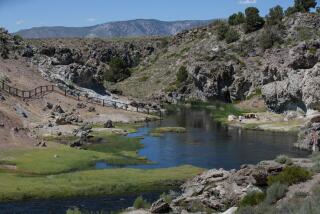Risk of explosions in coming weeks from Kilauea volcano’s summit, scientists warn
The U.S. Geological Survey has warned that the summit of Hawaii’s Kilauea volcano could experience explosions in coming weeks and send large quantities of ash into the air.
Evacuations or significant damage is not expected because the summit is far from populated areas — and 25 miles away from the Leilani Estates neighborhood, where lava flows have destroyed 36 structures since a new eruption began at the volcano this month.
The risk of explosions is the latest possibility in a chain of events that began April 30 with the collapse of a lava-filled crater 12 miles east of the summit.
Lava drained from the collapsed crater underground. The missing lava began reemerging on May 3 at the surface in Leilani Estates, oozing up through cracks in the ground and consuming homes, cars and roads.
The movement of the molten rock has opened space for lava at the summit of the volcano to drain underground, reducing the height of a lava lake at the summit, said USGS research geophysicist Ingrid Johanson.
That raises the risk for an explosion at the summit. Normally, when the lava lake level is high, temperatures are so hot that the groundwater in surrounding rocks is kept away from the magma. But as the lava lake levels fall below the groundwater table, water can start interacting with the magma, heating it up and creating steam, said USGS scientist Donald Swanson.
If rocks fall from the walls surrounding the magma in the volcano, the rocks can form a dam — and if the steam builds pressure, “it can eventually burst out in an explosion,” Swanson said.
Scientists estimate that the lava could interact with the groundwater by the middle of this month.
If explosions occur at the summit, areas within half a mile would be subject to bombardment by material that could weigh as much as 10 or 12 tons. Locations within several miles of the summit would be subject to falls of marble-sized rocks, fine-grained material and ash. In areas 10 to 20 miles away downwind, fine ash could float from the sky like snow, Swanson said.
Because of its distance from the summit of the volcano, Leilani Estates would experience a light dusting of ash, said Tina Neal, the scientist in charge at the USGS Hawaiian Volcano Observatory.
There are no inhabited areas within half a mile of Kilauea’s summit; the primary risk would be to visitors entering the area, which is home to Hawaii Volcanoes National Park.
Fine ash would be only a millimeter or less in size. Ash is primarily a nuisance, and can irritate the eyes and breathing, reduce visibility and cause roadways to be slippery, and interfere with electrical lines.
Steam-driven explosions were observed at Kilauea in 1924, when there was a similar drop in lava levels, Neal said.
Also on Monday, a different type of explosion occurred at the summit at 8:27 a.m. local time. It was probably caused by a nearby earthquake that dislodged rocks that fell into the lava lake, Neal said.
Meanwhile, a 15th fissure formed on Wednesday, sending lava into Lanipuna Gardens, a small neighborhood close to Leilani Estates, Hawaii County officials said.
There’s still a fair amount of magma underneath the neighborhood, Neal said.
Leilani Estates, normally home to 1,600 residents, and Lanipuna Gardens, with a population of 300 residents, have been evacuated. Nearly 300 people are staying in shelters. Seven private roads and two public roads have been turned impassable by lava flows.
Hawaii County officials are making plans to expand evacuation areas if needed. If the situation at the summit worsens, the National Park Service said it would take action to evacuate people and close Hawaii Volcanoes National Park to visitors.
The area affected by the eruptions is in a remote spot of eastern Hawaii Island. The closest resorts, in Kona and the Kohala Coast, are more than 100 miles away on the west side of the island.
Follow @page88 on Twitter
UPDATES:
6:15 p.m.: The article was updated with news of a 15th fissure spewing lava.
4:50 p.m.: The article was updated with a staff story, leading with news on the chance of future explosions at the volcano’s summit.
An Associated Press version of this article was originally posted at 10 a.m.
More to Read
Sign up for Essential California
The most important California stories and recommendations in your inbox every morning.
You may occasionally receive promotional content from the Los Angeles Times.











